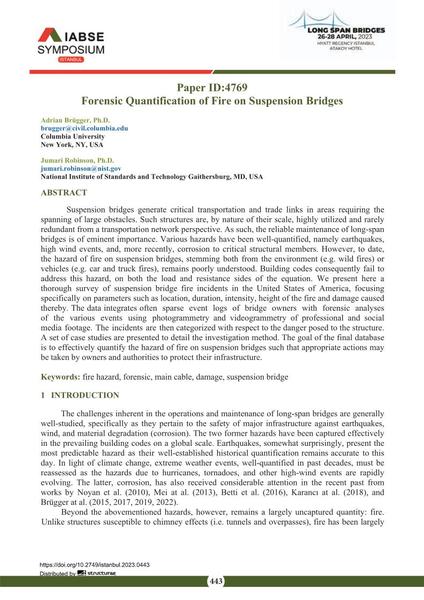|
Abstract:
|
Suspension bridges generate critical transportation and trade links in areas requiring the spanning of large obstacles. Such structures are, by nature of their scale, highly utilized and rarely redundant from a transportation network perspective. As such, the reliable maintenance of long-span bridges is of eminent importance. Various hazards have been well-quantified, namely earthquakes, high wind events, and, more recently, corrosion to critical structural members. However, to date, the hazard of fire on suspension bridges, stemming both from the environment (e.g. wild fires) or vehicles (e.g. car and truck fires), remains poorly understood. Building codes consequently fail to address this hazard, on both the load and resistance sides of the equation. We present here a thorough survey of suspension bridge fire incidents in the United States of America, focusing specifically on parameters such as location, duration, intensity, height of the fire and damage caused thereby. The data integrates often sparse event logs of bridge owners with forensic analyses of the various events using photogrammetry and videogrammetry of professional and social media footage. The incidents are then categorized with respect to the danger posed to the structure. A set of case studies are presented to detail the investigation method. The goal of the final database is to effectively quantify the hazard of fire on suspension bridges such that appropriate actions may be taken by owners and authorities to protect their infrastructure.
|


